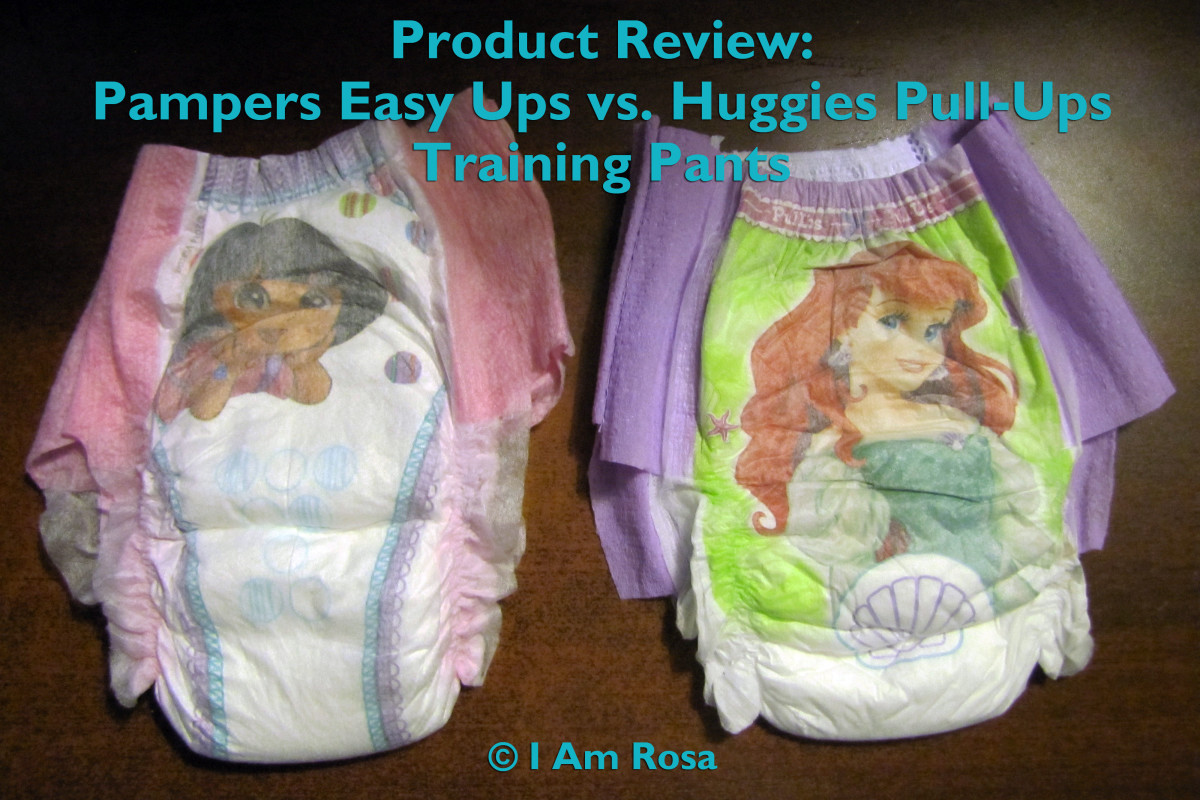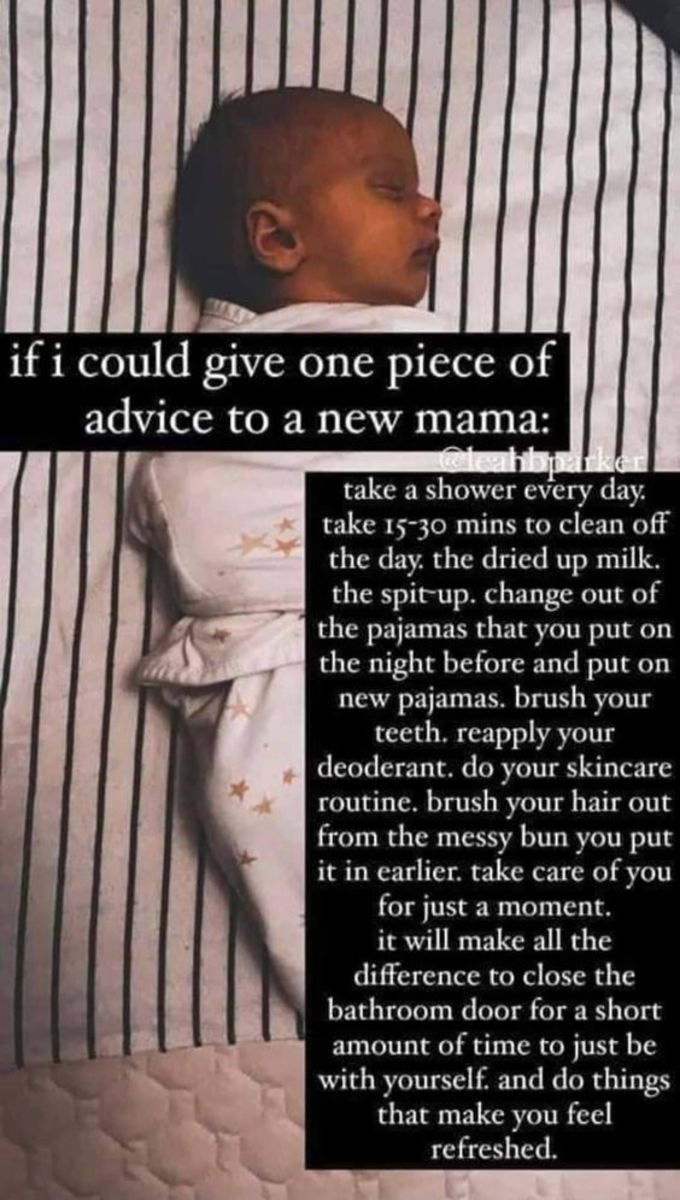Diaper Free Baby
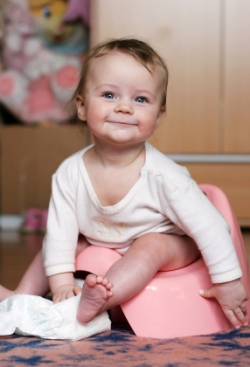
Getting Started with Infant Potty Training
It is generally believed that little babies have no control over the muscles used in elimination functions. The truth is that a newborn baby does have control over those muscles. Whether baby pees or poops in a diaper or in a container, the baby often does so consciously and deliberately. An observant and in tune parent can work with her baby on the timing and location of those elimination functions. The result is another way to bond with baby and the use of a few less diapers.
People who practice elimination communication (EC) do so on a number of different levels. You have the people who believe diapers are the devil and get their babies completely out of diapers within a few months of birth. On the other end, there are parents who keep their babies in diapers for pretty much as long as is normally expected and they work on elimination communication on a part time basis. It is my belief that most of us will fall into that second category. While it is possible to completely potty train an infant, it is a rather time consuming process and you will have a lot of misses, and therefore messes, along the way. I want to establish right now that elimination communication is not an all or nothing proposition, and it does not mean you have to dump your diapers. You can successfully practice it part time. Any amount of time spent working with your baby on elimination will benefit both of you and will lay a good foundation for future potty learning. In other words, you have nothing to lose by trying.
You can start working with a baby on potty functions at any time. However, it is easier if you start before the baby is four months old. I'd recommend beginning somewhere around ten days to two weeks after baby's birth. In my experience any earlier is overwhelming, though more die hard ECers say it's best to start with the baby's meconium movement. In the time that you're not ECing your baby, you're most likely noticing when the baby is wetting and soiling his diaper. Maybe baby pees right after nursing, or poops at ten every morning. A real good time for elimination is first thing after baby wakes up and right after a nap. When you start noticing a pattern over a few days, you can anticipate your baby's elimination and be ready with a container of some sort.
The container can be a small potty, your sink, bathtub or toilet. It can even be a dry diaper. Remove baby's diaper before he goes, hold him over your chosen container and wait. You can hold baby gently by his thighs and allow him to rest on your forearms. When baby eliminates, give him a cue. It can be a "psss" sound or a phrase. You will use the same cue each time you see baby eliminating. At first, you wait until baby eliminates to give him the cue. After a while, you can use the cue to encourage baby to go.
Once you catch one pee or poo, EC can get pretty addicting because it really is a lot of fun. Here are some important points to remember: This should be fun for both you and your baby. If it stops being fun, it's a good idea to take a break for a few days. It's not about catching everything or seeing how quickly you can get baby out of diapers. It's about bonding and learning with your baby. It should never ever be punitive in any way. While some of us may indeed find we can confidently take our baby out of diapers much earlier than what's considered normal, most of us will just steadily EC our babies a little here and there and one day, that ECing will morph into gentle potty learning for our toddler.
Photo Source: Deposit Photos
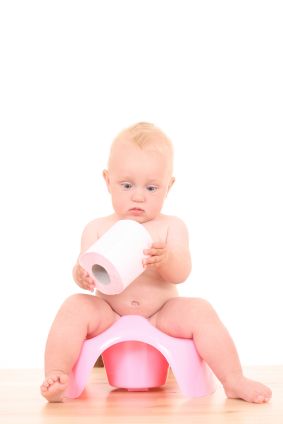
An Introduction to Elimination Communication
Cloth or disposable? Just one of the many choices a new parent faces. Recently, however, a different diapering option (or more appropriately, a non-diapering option) has gotten the attention of many green parents. It's called Elimination Communication, or E.C. Also referred to as Natural Infant Hygiene (and less accurately as infant potty training), E.C. is a way of drastically reducing the number of diapers your baby will use until your baby is using the potty independently. What is E.C.?
E.C. is a new term given to an age old practice. It involves a parent recognizing a baby's potty cues and putting him or her on an appropriate potty place. Modern parents may use a child size potty or the regular toilet, or a sink. Many ancient peoples all over the world (in places like Africa, Asia and even the Americas) used and continue to use a similar method. E.C. means tuning in to your baby and helping him eliminate in a socially appropriate place instead of his clothing or diaper.
Some modern parents, especially those who practice attachment parenting, have the view that children should show signs of readiness to potty train and then be helped by their parents to meet this developmental milestone. Yet our Grandmothers routinely potty trained their toddlers at around one year of age without harsh practices. They simply placed the baby or toddler on the potty after they arose from a nap or after eating (common elimination times) to help the child get into the habit of not soiling their clothing. Perhaps this came about as a way of avoiding having to wash cloth diapers for two or three years, which was not a pleasant chore before modern washing machines!
E.C. is, at its heart, a respectful and gentle way of raising a baby. It shows respect for your baby as a separate individual with their own needs and ability to communicate those needs. It is not a coercive or harsh method.
So how does one start doing E.C.? The website www.diaperfreebaby.org is a great place to start reading if you want to learn how to do E.C. You can start with an infant who is a newborn or you can help a toddler potty train with E.C. principles. E.C. can start as simply as this:
Pick a day when you won't be leaving the house and remove your baby's diaper. You may want to keep your activities limited to one room, perhaps one without a carpeted floor. Or place a blanket or towels on the floor. Play with your baby and see if you can identify his potty "cues". They may be: sudden stopping of activity for older babies, squirming or fussing slightly for younger babies, a look of concentration, or some other sign.
When you notice that cue, try sitting your baby on a potty or holding him out over the toilet and making a "psss" or "ssshhh" sound. He might pee in the potty right then, or he might not. Keep trying and see what happens. Wearing your baby in a sling for much of the day will help you cue in to his signs also. Parents who practice E.C. notice that babies rarely pee on their parents, and if they do, it's often because the parent has ignored the baby's signal or their intuition.
Speaking of, intuition and learning to communicate telepathically is one of the greatest rewards of E.C. Parents report that they get a feeling their babies need to eliminate, and if they ignore that they get a wet lap! If they respond they often "catch" a pee in the potty. Communication is the heart of E.C.
E.C. can be done part time and does not have to be an all or nothing proposition. Some parents who E.C. keep their baby in diapers to protect their carpeting, and remove the diaper after naps and meals to use the potty. Keep it fun and just be curious, don't feel you have to get your baby to "perform" and certainly don't feel inadequate if your first attempts at E.C. don't work. E.C. is not about getting stressed out about elimination!
Why not give it a try? You might learn a lot about yourself, your baby and use far fewer diapers in the process.
Infant Potting Training Books
Integrating Elimination Communication into Busy Family Life

Very few of us are going to end up being die-hard ECers even if we do start out that way because for the most part it isn’t very practical considering our highly scheduled modern life. Even so, there are some very good reasons to practice EC on some level with your baby. I believe it’s a skill every new parent should acquire and work on.
The first reason is that it facilitates getting a baby out of diapers for a portion of the day. At the very least, you will be occasionally holding your baby over a container for a few minutes, rather than taking off one diaper and immediately putting on another. Even a few minutes of airing out can do a lot of good for baby’s skin and help prevent diaper rash that’s caused by too much exposure to wet diapers. You’ll also be trying to keep baby in a dry diaper as much as possible, which will also help with diaper rash. More likely, you’ll be taking the diaper off your baby for longer periods at a time. If your baby does happen to develop a diaper rash, you’ll find the best way to deal with it is often to just give the baby lots of bare-bottom time. If you’re already practicing EC, you’ll be more comfortable with that.
The second reason is that even though you won’t be catching every pee or poop your baby makes, your baby will start holding pee longer and therefore when she does pee, it will be higher volume. This will also help baby stay dry in her diaper for longer, and you’ll be able to gradually go longer and longer between changes. Overall you’ll use fewer diapers, which can make getting around easier. Babies who are ECed will very often develop the ability to stay dry all night most of the time fairly early. You can take them potty in the morning or if you’re too late, change their diaper with the knowledge that it got wet recently. Given that cloth diapers can sometimes leak, having a baby who can stay dry all night can be a real bonus.
The third reason is that when it’s time for complete potty learning, all you do is ramp up what you’ve been doing from the beginning. Your child’s potty training will become the final stage in the EC journey rather than being this brand new, possibly intimidating, milestone. This can make the potty learning time less formidable for both of you.
Finally, EC is fun. There’s nothing like the triumphant feeling you get when baby is clean and dry, you take her to the potty, and she gleefully produces a double whammy. Baby enjoys not having to soak in that even for a second, and you can mentally count up the number of diapers you’ve saved that day or week. A diaper saved is a diaper earned, right?
Elimination communication is for everyone, not just the committed environmentalists or crunchy mamas. Even conventional parents along with their babies can have fun and benefit from a little EC.
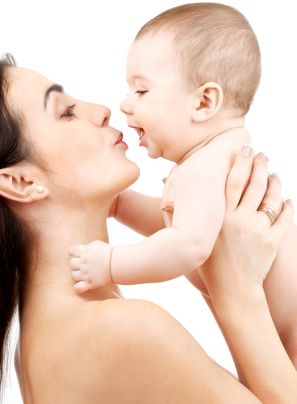
Advanced Elimination Communication Techniques
You've been practicing elimination communication in a limited way for a while and you're ready to take the plunge and get your baby out of diapers completely. Or maybe your baby has sensitive skin that's prone to diaper rash. How do you get there?
The first step is more of a mental step than anything. You have to determine your comfort level with having a bare-bottomed baby who could "go" at anytime anywhere. You will be catching a lot of pees and poops, but you'll still miss some and you need to be OK with that. The main reason babies are diapered is so that the messes are contained and relatively easy to clean up. This means that the baby often sits in the mess for a while and that does seem unfair to the baby. However, if you're good at changing baby right away, that's preferable in the long run to being nervous about baby's elimination. If you're the sort who gets neurotic about every spot, you may not be comfortable with going completely diaperless. You can still do EC with diapers.
You have to consider your home and the ramifications of baby eliminating on the floor, the furniture, or you. There may be limited areas in your home that are easier to clean up than others. The easiest is a lawn-grass yard, which involves no cleanup for pees and limited cleanup for poops. Next is a tile or linoleum floor that only needs to be wiped with a rag. For that kind of floor immediate cleanup is important for a walking baby so he doesn't slip in a puddle of pee. A carpeted floor is harder to clean up but it can be done with a rag and a natural cleaner. Regular mild cleaners work pretty well, though you'll need to use elbow grease for poop. Pet cleaners work well, though they're not the most natural choice. Considering and being prepared for the inevitable cleanup will go a long way towards making you more comfortable. Even if you're going the traditional toddler potty learning route, there will come a point where it's time to take off the diaper.
Once you've accepted the worst case scenario, the next step is to simply take your baby's diaper off and go about your business. It's important to be as relaxed as you would be with the diaper on. If you find yourself getting too nervous, it's time to back off and maybe put the diaper back on. You pay attention to your baby's cues and take him to the potty when he indicates a need to go. Or, you can just take him regularly and see if he goes on cue then. As you keep working with your baby, you will catch more pees and poops and miss fewer. However, it will vary greatly from day to day.
As your baby gets older and learns new skills he will be more distracted and may forget to signal his need to eliminate. Who wants to take the time to go to the bathroom when life is so exciting? You should take those days in stride and keep at it. There may also be times when baby has a potty strike. When that happens, you can back off of EC and use diapers for a few days, then try again. If you like to sign with your older baby, you can teach him a sign for going potty.
With a lot of patience and persistence you may be able to have your baby out of diapers early and eliminating in the potty most of the time. It's important to always keep in mind that EC is a journey, and it should be fun for you and your baby. If at any time it's not fun for either one of you, it's best to back off for a while, then try it again when you're both more relaxed
Diaper Free Advice
This is a wonderful book! The book explains in thorough detail the age old concept of Elimination Communication (also called Natural Infant Hygiene). The author talks about the history of EC and how it's been around for ages in various parts of the world- even before the diaper came to be. She even notes that in some countries, a baby never even sees a diaper! She then goes on to explain how one can begin trying EC for themselves. She candidly discusses with such clarity and wisdom why one should consider EC and then she breaks it down according to age and amount of time one wants to commit to EC.
She begins with ECing a newborn 0- 3months, Middle Infancy 3-8 months, EC'ing your mobile baby and then Ec'ing your toddler. The book is wonderfully written and it includes many testimonials from parents and other caregivers who practice EC. They comment on various aspects of EC'ing whether it be age (advantages and disadvantages), common struggles, or the amount of time one is able to commit to EC'ing their little one and how it works for them. The author is wonderful in that she explains how to EC at any age, and for any amount of time without any judgment or bias thus making one feel completely comfortable if they are a "late" starter who only practices ECing occasionally or part time. She says to try it for a week and see what happens.
Prior to reading this book, I thought I'd need to meet with others who practiced EC before being able to start. This book has proven that I can go it alone and has been extremely helpful to me in beginning my own ECing journey with my baby. If I were going to read only one book on the topic of EC, this book would be it!





